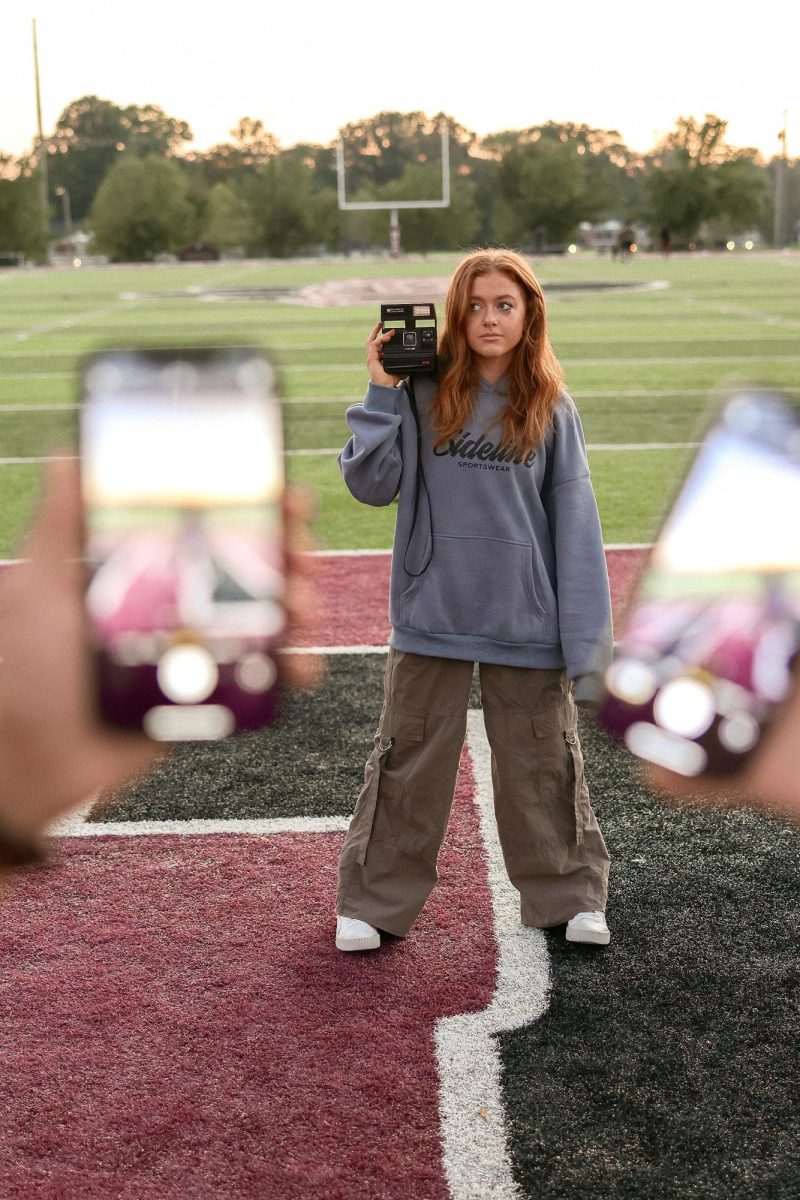Is the cost of social media a price too devastating to bear? Or is the ability to shout anything into the void and still be heard well worth any potential catastrophic effects? This is the question that Campbellsville University is posing to students and faculty alike, during the first year of its new Quality Enhancement Plan (QEP) based around Civil Discourse.
Generally, it depends on who you ask. Social media has ultimately become intertwined with the daily lives of nearly everyone, indiscriminate of age. While it’s still brand new and the impacts of it on our youth are still yet to be fully seen, it’s common enough to see a new headline every once in a while emphasizing depression, anxiety, cyberbullying and other caveats of constant usage. After all, the instant dopamine rush of affirmation that social media offers is a high unlike any other. But the potential issues social media is giving to our youth aren’t the only concerns dragging its reputation under.
A study done in 2018 revealed that fake news on X (formerly known as Twitter) often spread up to 10 times as much as the truth did, and that was six years ago. It’s now one pandemic, two election cycles and a hundred global controversies later, and if anything, the issue has become impossibly worse. A 2022 survey from the Pew Research Center revealed that 64% of Americans believe that social media has been a bad thing for their country’s democracy–making the U.S. a major outlier in a sea of most other countries who vehemently believe the opposite.
The rapid spread of misinformation on social media is a beast that many have tried to tame in their own way, (community notes for X and post removal for Meta) but each method is no match for the rate of misleading or even completely false messages being sent out on a day to day basis. Throw in the inevitable growth of technology, specifically artificial intelligence (AI), and we’ve got more than a beast–we’ve got a social problem.
It doesn’t help that traditional methods of spreading news are suffering and journalists are in a pickle trying to find a way to keep the lights on–some even resort to using clickbait and thrive from posting their articles on social media to promote in-fighting. Meanwhile, other news organizations seen as the last bastions of ethical and unbiased coverage, particularly local newspapers, are hurting because they simply can’t bring in the same amount of attention that fear-mongering does.
Additionally, due to the relatively low barrier of entry, journalism has undergone a change and now any average Joe can pick up their phone, press the record button and either form an audience of their own or have their story picked up by news outlets. That news and media in general has become so reliant on citizen reporters instead of their own ethics trained and informed writers is both a blessing and a curse. We’re instantly updated with news every second, but the reliability of it is compromised because we never know who is acting in bad faith–especially if we just believe in it blindly.
As a mass communication major, all of this hits close to home. Maybe it’s because so much of it impacts and jeopardizes the future of my career and even life–maybe it’s because I’ve spent the past four years learning about ethics, laws and how important transparent communication truly is to our society–maybe it’s because I’m seeing the people around me, young and old, fall victim to misinformation. Whatever it is, it has me recalling everything I’ve learned during my time as a student.
Particularly, the term I’ve heard discussed in several of my classes, “the marketplace of ideas” comes to my mind. The simple idea is that the spreading of information and ideas isn’t different from items in a market or store. You’ll have different companies peddling the same product, or in this case, a specific opinion or narrative about something, and they’ll be directly competing with each other. Ultimately, the most truthful and best idea will be victorious–or, at least, that’s how it was.
Nowadays, at least in my perspective, it’s less about the product itself and more about the advertising and spread ability of its marketing team. And honestly, it’s the same for information on the internet now. Just telling the truth isn’t enough, and if it doesn’t produce enough engagement, then the idea simply doesn’t ride to the top. Instead, it sinks to the bottom while a conversation purposefully farming outrage garners plentiful engagement from people on both sides and takes the throne–until the next controversial discourse replaces it.
Of course, this is my cynical opinion based on what I’ve seen on social media–I even asked a professor for their opinion on if the so-called “marketplace of ideas” still exists, and they passionately told me that it did. If they, a longstanding and well accredited figure in the communication industry, still have hope for the truth to come out on top, then there must be merit in that belief. And honestly, I think there is, if we face the problem head-on, before it becomes worse.
The root of the issue is media literacy. Not only is it the ability to receive and read the messages we see on the internet, but it’s the ability to understand them and respond, whether that response is looking for more information on the topic before trusting it or replying in earnest. It’s a term that my fellow Zoomers probably remember from middle and high school, when we were sat down in the library every year and taught about both trustworthy and suspicious online sources. Back then, we weren’t sitting at the edges of our seats while our librarians told us the difference between commercial and government websites–not because we didn’t agree with it, but because we thought it was common sense. You weren’t supposed to trust ilovefrenchfries.com or ihatepotatoes.com to give you real insight on the nutritional value of french fries. That’s a very on the nose example, but you get the point.
The question is, why didn’t that logic translate over to social media? Specifically now when users profit off of engagement and it gives them a reason to lie in order to garner attention, why do people trust them blindly without doing their own research? Because it vindicates them? Because the truth would discredit them? Because ignorance truly is bliss? Whatever the case, it still leads to the same result, and now social media is inundated with so many falsehoods that it’s difficult to tell the truth.
So, what’s the solution? Is there a way to keep journalists fed and to satisfy our ever-growing need for content? If we’re still subscribed to the idea of a free marketplace of ideas, censorship is not the answer. We’re the land of the free, after all. Instead, the solution to everything ties in to Campbellsville University’s current QEP theme–civil discourse. Having genuine conversations about these issues without mudslinging is integral. As is teaching media literacy, especially now that AI is taking the world by storm and some people can’t even tell that a picture of a person with three arms might not be real. A healthy dose of skepticism is now necessary for every internet crawler.
It’s not specific to any age group, and people’s level of exposure to media literacy shouldn’t bank on whether or not they choose to pursue tertiary education, or their major. After all, misinformation doesn’t just threaten the communication industry–it harms every single discipline and the everyday lives of individuals. Whatever your political or religious affiliation, we can all agree that the way things stand now, every facet of our life has the potential to be disrupted by these easily spouted lies that see no consequences for the messenger.
Whether or not social media currently has an overly good or bad impact on all our lives, there’s a bitter truth we must swallow. If our reliance on these platforms and the growth of technology continues at the rate it does, if we don’t find a solution to the severe lack of media literacy across the world, it’s more likely that the answer will reflect the very same negativity purposely promoted online in every space.





















